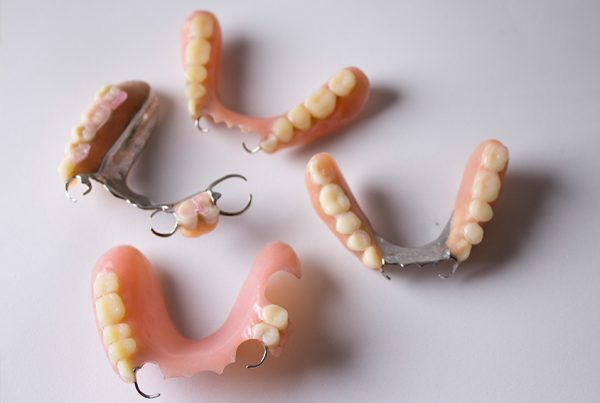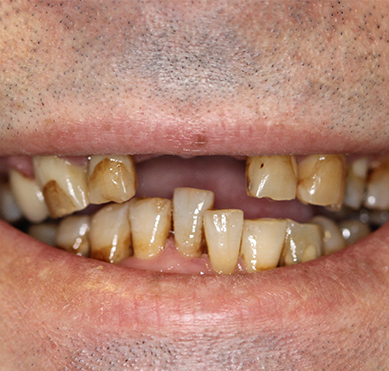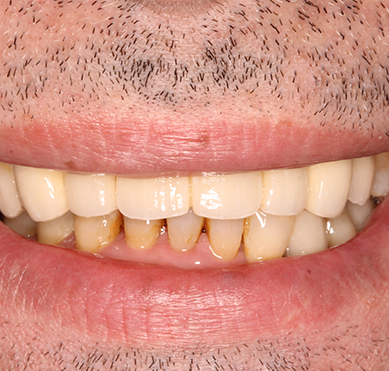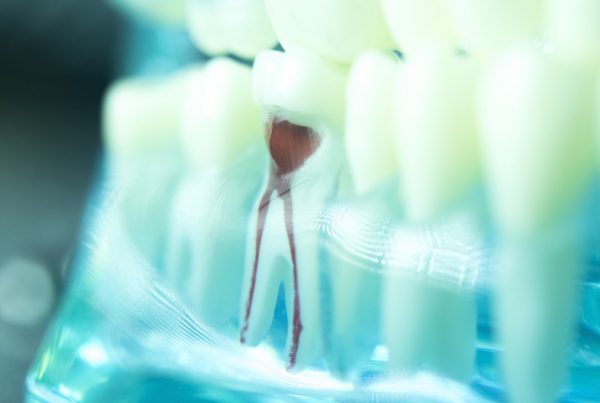A ‘bridge’ in dental terms is a false tooth that is supported by a natural tooth either side of the gap. It is a way of replacing a missing tooth that is fixed in your mouth.
A bridge can be used to replace one or maybe multiple teeth. The teeth that support the bridge have to do extra work when you chew. For this reason, bridges are often not a good idea for big gaps as the supporting teeth might take too much pressure.
Conventional Bridges
A conventional bridge requires the supporting tooth or teeth to be prepared for a crown. The false tooth or teeth are attached to the crown that covers the supporting tooth. Because the supporting teeth need to be covered by a crown, some enamel has to be removed from these supporting teeth.
For this reason, preparing teeth for a bridge means that you may shorten the useful life of the teeth used to support the bridge. When the bridge fails in future, it is quite possible that the supporting teeth will be lost and then you can be left with a bigger gap.
Bridges can fail because of decay starting under the bridge if cleaning is poor. They can fail from the supporting teeth fracturing under the increased load. They can also fail prematurely if the supporting teeth die off and need root canal treatment or extraction. See previous chapters for information on this treatment
Despite these possible problems, they can be very successful. The key to this is careful planning before starting any treatment.
Sticky Bridges
The official name for this type of bridge is a ‘resin retained bridge’. It’s easier to call them sticky bridges and the name very helpfully tells you about how it works. This is a false tooth that is stuck onto a tooth nearby using a little wing that wraps around the back of the supporting tooth.
This is a great treatment because it is so simple. There is either barely any or zero drilling involved. It doesn’t require the supporting tooth to be prepared for a crown. The supporting tooth can normally stay exactly how it is.
Like any bridge, it’s great because it is fixed in place in your mouth. It doesn’t need to be taken in and out. They can be used as long term or short term measures. They can be used temporarily as the gum heals after having a tooth taken out and then replaced by something else after the area has reshaped. They can be used as long term solutions for a missing tooth and, providing they are correctly cemented, they can last for years and years.
They are brilliant for replacing teeth near the front. They tend not to be as successful at replacing back teeth because of the extra pressures on back teeth during chewing.
They can often look fantastic. The only thing to mention is that if the bridge has a metal wing (metal wings are used most commonly) you can sometimes see it shining through the supporting tooth as a slight greyish appearance. It can often be disguised by certain cements and is generally not a big issue.
I think they are great for giving an option that is fixed in your mouth and doesn’t require other teeth to be trimmed down.
Keep updated with the Online Dentist newslettersign up today
Recent Articles
 A denture is a false tooth or teeth on a plate. They are not fixed in place and can be taken in and out. They are generally the easiest way...
A denture is a false tooth or teeth on a plate. They are not fixed in place and can be taken in and out. They are generally the easiest way...
 Gum disease is when bacteria have got underneath your gums and are damaging the supporting tissues of your teeth. If you get rid of the bacteria, you’ll stop the damage....
Gum disease is when bacteria have got underneath your gums and are damaging the supporting tissues of your teeth. If you get rid of the bacteria, you’ll stop the damage....







